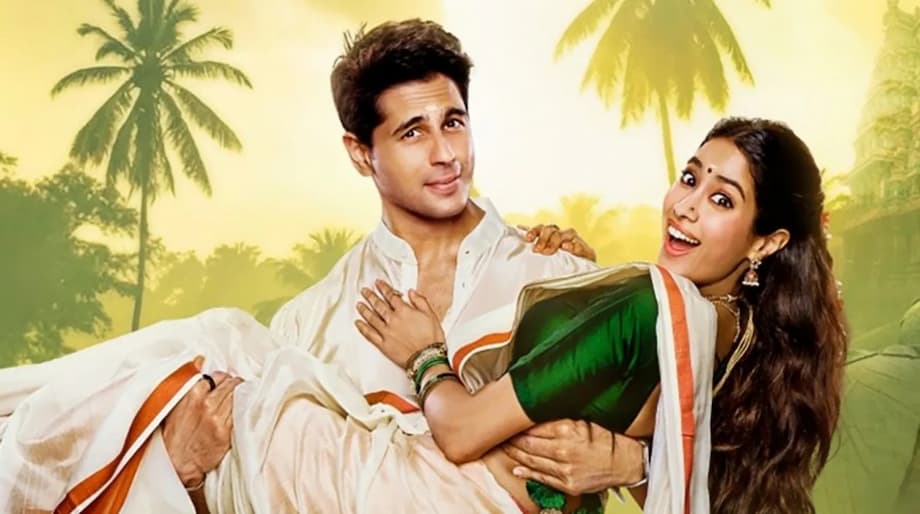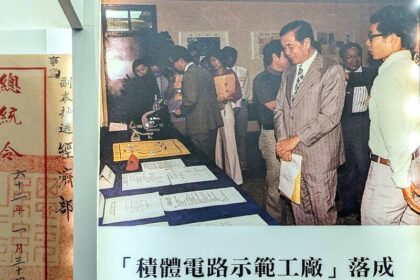Why this romance has inflamed a cultural debate
A glossy Hindi romcom has turned a simple meet cute into a fierce conversation about respect and representation. Param Sundari, directed by Tushar Jalota and released in India on 29 August 2025, pairs Sidharth Malhotra as a Delhi entrepreneur with Janhvi Kapoor as a woman from Kerala. The promise was a north meets south romance. The reality, according to a wave of critics and viewers, is a familiar checklist of tourist images and shaky Malayalam presented as cultural texture.
- Why this romance has inflamed a cultural debate
- What the film shows and why it stings
- Language, accents and the casting question
- Voices from Kerala and beyond
- How we got here
- The business backdrop and the rise of regional cinema
- Examples that get it right
- Social media, takedowns and diaspora reactions
- What respectful representation could look like
- The Bottom Line
From its trailer, the film drew flak for the heroine mispronouncing her own name. Inside the story, a friend hears the destination Nangiarkulangara and asks, Where is that? Africa? The line lands because it bundles a cheap laugh with casual ignorance. Once in Kerala, the script tours backwaters, coconut trees, elephants, Onam festivities and toddy. Reviewers likened it to an extended tourism commercial that trims away nuance. The character of Sundari, who wears jasmine flowers, climbs coconut trees, and even chats with elephants, became the symbol of what many saw as a caricature rather than a person.
Some viewers were less bothered. One audience member quoted by the BBC, a man from Bihar, said authenticity should not smother entertainment and that a little artistic freedom is acceptable. Others felt the film uses surface level culture as a prop while doing too little to get the language, rhythms and social reality right. The split response reflects a larger dispute about where to draw the line between playful exaggeration and crude stereotype in mass market Indian cinema.
What the film shows and why it stings
Much of the anger has to do with how language and lived detail are handled. Sundari wears a string of jasmine, swings up coconut trees, and erupts in coconut gags. The couple first meets under a coconut tree. She vents by harvesting coconuts. He declares love from atop one. These recurring images might read as comic flourish to outsiders. For Malayali viewers, they can feel like a script written at arm’s length. The Malayalam is often off key. The Hindu reported that Kapoor’s self introduction, heard in the trailer as Thekkapetta Sundari, sounded to Malayalis like deceived beauty, while the likely intent was a family name that would be closer to Thekkeppattil. That slip, multiplied across lines, signaled to critics that care and consultation were not priorities.
On screen, micro moments add up. In one scene described by Onmanorama, a line about Kerala’s near universal literacy plays as a smug jab, a driver swigs toddy before crashing his car, and a local man appears as a joke in broken English while guiding the hero to Thekkapettu Homestay. The film even stages a punchy exchange where Sundari tells the Delhi duo, Paratha, Porotta, same, same. The barb flips the script on lazy generalisations, yet most of the surrounding humor still leans on the idea that Malayalis are quaint, coconut wielding and slightly exotic.
Language, accents and the casting question
Cross language casting is common in Indian cinema. For decades, actors have played outside their mother tongues. Dubbing once smoothed the result. As audiences began to value authenticity, the industry pushed more actors to deliver lines themselves. The shift raised the stakes on accent, idiom, and cultural grounding. When these details are thin, well intentioned romance can turn into a sketch about stereotypes.
The Mary Kom biopic is one benchmark in this debate. Priyanka Chopra won praise and awards for her performance as the champion boxer from Manipur, then later said that in hindsight the part should have gone to someone from the northeast. The runaway success of Chennai Express did not erase its harsh reviews for resorting to a singsong Tamil stereotype. More recent projects like Meenakshi Sundareshwar and Two States also faced criticism for flattening southern identities into a few well worn tropes. The Indian Express framed the Param Sundari furore as part of an ongoing debate: cross language casting is not the problem by itself, but it fails when the character is built on cliche and the writing never earns the accent.
There are counter examples. Films like Godha, Axone and Qarib Qarib Single have shown that cross cultural stories can be warm, funny and convincing when they rely on strong local writing, dialect support and thoughtful casting. Those choices do not slow a film down. They can make it sing.
Voices from Kerala and beyond
Kerala based critics, writers and influencers have led the pushback. Reviewers called the film exotic on the outside and hollow inside, a glossy package that treats a living culture as postcard scenery.
Introducing her review in The News Minute, critic Sowmya Rajendran described the experience starkly. She called the film generic, exhausting and offensive, arguing that its version of Kerala is a stage set with tired gags rather than a world with people in it.
Sowmya Rajendran, a film critic, wrote that the romcom hides tired cliches behind an exotic Kerala setting and a score that overplays the land’s foreignness.
Pavithra Menon, a Malayalam radio host and former actor based in Dubai, posted a viral video calling out the accent and the stereotypes. The clip was briefly removed after a copyright complaint, which only intensified the conversation. Menon later clarified that her criticism was not personal to Janhvi Kapoor. It was about guidance, coaching and respect for audiences who know the language.
Pavithra Menon said, Actors can learn accents with the right coaches. Hollywood does it all the time. Kerala audiences love humor and we laugh at ourselves, but 2025 is long past the point where a Malayali woman who cannot speak her own language is a punchline. Bollywood can do better.
There are also viewers who shrug at the culture war and want a breezy romance. The BBC quoted a fan from Bihar who enjoyed the film as a light window into a new place.
Rajiv, an audience member, said, Maybe this will change gradually. But this much artistic freedom is okay to make the movie interesting.
How we got here
Stereotyping has long been a shortcut in commercial cinema for instant recognition and quick laughs. The trope of the funny accent, the coconut joke, or the fish out of water gaffe survives because it is easy to write and lands in a crowded theater. Earlier decades offer their own cringe. Mehmood’s 1968 Padosan caricature of a Tamil singer is still part of film lore. That does not make it safer today. A wired audience in the internet era can push back in real time and demand more care.
Writers and filmmakers who prize research argue that authenticity lifts stories rather than weighing them down. Ashok Mishra, the screenwriter of Kathal: A Jackfruit Mystery, told ETV Bharat that jokes built on mocking dialects are cheap and corrosive.
Ashok Mishra said, Just to create some comedy you cannot be using people from different States like Kerala or Bihar or Punjab. It hurts them. We should respect dialects. Caricature happens when you do something deliberately. If you keep people’s dignity in mind then you will never make this mistake.
Some industry voices, like trade analyst Komal Nahta, counter that commercial films often rely on familiar images because they believe audiences expect them. He described it as risk aversion more than malice.
Komal Nahta said, Culture stereotypes are sometimes done deliberately otherwise people may not be able to identify with those characters. Filmmakers want to stick to the norm because nobody wants to take a chance in a commercial film. They prefer to go by what the public already thinks.
Critics such as Delhi based reviewer Arnab Banerjee argue that accuracy matters in a country where cinema often shapes understanding of places and people. He told ETV Bharat that audiences deserve truthful details regardless of genre, and that solid research improves enjoyment by making the world feel real.
The business backdrop and the rise of regional cinema
The reaction to Param Sundari is also a story about a shifting market. After the pandemic, Bollywood has struggled to mint dependable blockbusters. Streaming platforms and nationwide theatrical runs for regional films have introduced millions of viewers to Malayalam, Tamil, Kannada and Telugu cinema. This has raised the bar on portrayal and storytelling. When audiences can instantly compare a Hindi film’s version of Kerala to a Malayalam hit, shortcuts are easier to spot.
Param Sundari has earned modestly. The Times of India reported a domestic total of about Rs 34.5 crore in the early run. By contrast, the Malayalam female superhero thriller Lokah, produced by Dulquer Salmaan, crossed Rs 100 crore worldwide within eight days, according to ETV Bharat. Beyond numbers, the success of regional films has changed taste. Subtitled and dubbed versions travel widely. When a Hindi film plants a flag in Kerala, it now enters a crowded space of stories that speak the language with fluency.
Examples that get it right
There are many models for respectful, energetic cross cultural storytelling. Godha brought a Punjabi wrestler to Kerala and found humor without punching down. Axone turned the daily grind of northeastern students in Delhi into a warm comedy about food, friendship and prejudice. Qarib Qarib Single put a Malayali woman’s voice at the center without making her background a gimmick.
Festival favorite All We Imagine As Light, made by Payal Kapadia, shows another path. The film used original lines in Malayalam with the support of a Malayali co dialogue writer, a basic step that grounds scenes in real speech. The Hindu pointed to a different craft lesson from music. Singer Shreya Ghoshal built a reputation in the south by putting in the work on diction in multiple languages. That kind of preparation is available to film units as well.
Writers have also stressed the politics of who gets to tell whose story. In the BBC’s report, the writer and poet Aleena noted how multiple Indian industries, including Malayalam cinema, have stereotyped others. She pushed for collaboration that includes the communities on screen.
Aleena said, This is a larger question of power dynamics and representation. When a story portrays a community without including the real voices of people from the community, it risks becoming skewed and imbalanced. We need to make people participants or stakeholders in the art we are trying to make.
Social media, takedowns and diaspora reactions
The backlash did not play out only in reviews. Several influencers who mocked the film’s accents and scenes reported copyright takedowns of their clips, according to The Hindu. That triggered a separate argument about fair use and criticism. Pavithra Menon’s video was among those flagged before returning to public view. The controversy traveled beyond India. A Gulf News column captured the frustration of Malayalis abroad who feel a sting when a culture is reduced to costume and mispronounced words, especially when the lead actor is a pan Indian star expected to bring care and curiosity to the role.
Param Sundari’s headlines were not limited to language. The Times of India noted online chatter about the age gap between the leads, the coconut tree scene, and the relative absence of Malayali performers in key roles. The film does use several actors from Kerala in small parts, as Onmanorama pointed out, yet they often occupy the same sketchy boxes. Small course corrections inside the film, including a few jokes that challenge northern stereotypes, cannot carry the weight of a portrayal that leans so hard on tourist shorthand.
What respectful representation could look like
There is no single fix, but a bundle of practical steps can raise the floor quickly. Many are inexpensive, especially compared to the cost of star vehicles, location shoots and large marketing campaigns. They also help comedy and romance land better, because audiences lean in when the world feels lived in.
- Hire dialect coaches early. Let actors rehearse real speech patterns and musicality, not just vocabulary.
- Bring in local writers or co writers who can check lines and suggest everyday details for homes, streets and festivals.
- Cast regional actors in meaningful roles, then give them full characters, not one joke parts.
- Work with cultural consultants during scripting, not only after shooting starts.
- Record scratch tracks of local speakers and run key scenes past test viewers from the community.
- Use dubbing strategically if time is short. Viewers often prefer a believable voice to garbled lines.
- Treat jokes about place and language as spice, not the main dish. Build humor from character, not accent.
None of this kills a romcom’s pace or charm. It opens the door to richer banter, sharper chemistry and more satisfying endings, because the characters sound and move like people rather than postcards.
The Bottom Line
- Param Sundari’s depiction of Kerala set off a national debate about language, casting and cultural shortcuts in Hindi cinema.
- Critics flagged mispronounced Malayalam, coconut heavy gags and an accent that many Malayalis found inauthentic.
- The Hindu reported that the heroine’s trailer introduction sounded like deceived beauty in Malayalam, likely a misfire for a family name.
- Social media criticism drew copyright complaints, briefly pulling down viral videos, which broadened the controversy.
- Box office returns have been modest at about Rs 34.5 crore, while Malayalam hit Lokah crossed Rs 100 crore worldwide within eight days.
- Experts split on why stereotypes persist. Some cite risk averse commercial logic. Others argue audiences deserve accurate detail in every genre.
- Examples like Godha, Axone, Qarib Qarib Single and All We Imagine As Light show how collaboration and research can deliver authentic cross cultural stories.
- Practical fixes include early dialect coaching, local co writers, respectful casting and targeted use of dubbing.












